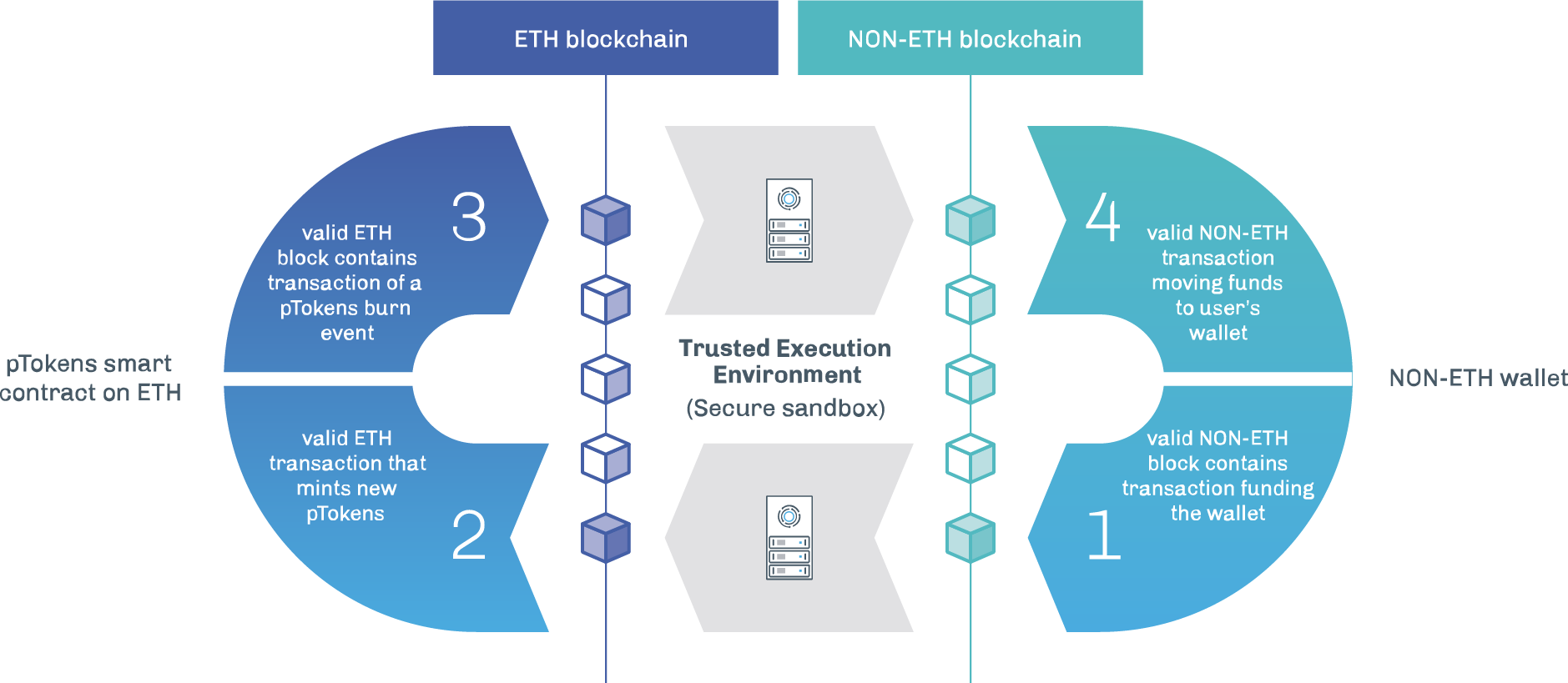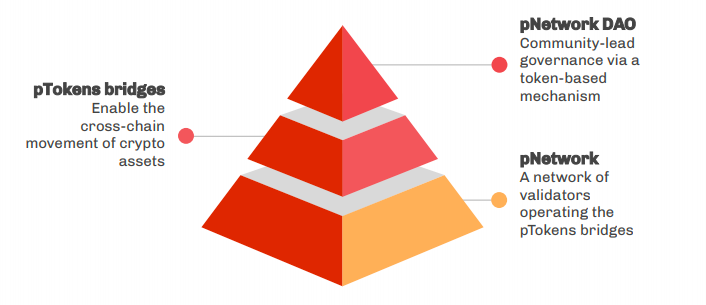Thomas Bertani told us pTokens backstory and shared his vision of the future of cross-chain DeFi interoperability.
Hello! What’s your background, and what are you working on?
My name is Thomas Bertani and I founded pTokens, a cross-chain interoperability project that enables any cryptocurrency to become compatible with any blockchain.
I’ve been working in the blockchain space since 2012. The pace of innovation within the community was exhilarating to me. Every project seemed to enable a way forward for the next idea, and I knew I could address some of the challenges faced by decentralized protocols – from adoption to interoperability.
I founded a Bitcoin on-ramp in 2013 (at the time it was called “cash to bitcoin marketplace”), and in 2015 I founded Provable Things, which would go on to develop the longest-running blockchain oracle industry-wide.
As DeFi began to take hold, I wanted to support its growth and address any of its limitations – composability, for instance. I founded pTokens to ensure that DApps could be accessible to anyone using cryptocurrencies, without them having to sell their Bitcoin, Litecoin, EOS, or any other blockchain asset they hold. With pTokens, users can let liquidity flow frictionlessly between blockchains, enhancing the utility and transformative power of their cryptocurrency assets.
What’s pTokens backstory?
The pTokens project was designed as an initiative by the main development team behind Provable Things. With a background in blockchain, tokenomics, and Trusted Computing our team excitedly watched as the DeFi industry grew rapidly around us, but we noticed that the liquidity in the market wasn’t accommodating the constant flow of new tools and platforms.
Each blockchain is essentially a walled garden, locking out other cryptocurrencies and locking in the liquidity. And as a majority of the industry built upon the Ethereum network, one pain point persisted: hundreds of DeFi Dapps were inaccessible to non-Ethereum crypto holders.

We wanted to enable cross-chain composability for all crypto assets on any blockchain. It wasn’t long before we validated our approach with successful testnet launches for pTokenised assets: pBTC, pLTC, and pEOS. And now, of course, pBTC is on mainnet for the Ethereum and Eos blockchains.
It’s amazing to me how quickly the project grew. With a talented team and input from the community, we went from a testnet validation to announcing our progressive decentralization roadmap, which includes the launch of pNetwork, a governance token (PNT), and a DAO.
What went into building pTokens?
The solution is built on a combination of blockchain, Trusted Computing, and Multi-Party Computation techniques.
The pTokens are minted using a cryptographically secure system which makes the whole process transparent, fully-auditable and automated. The issuance and burning of pTokens, along with the respective deposit and release of the underlying asset (such as pBTC and its BTC on the Bitcoin blockchain) is handled automatically by the enclave within a Trusted Execution Environment.
At the moment, we’re unilaterally deciding what bridges we should build next and where the development team should focus, but ultimately we believe a decentralized governance model will best serve the project – and in fact, we’ve recently announced the p.Network, a governance token, and what we believe will be one of the biggest DAOs in DeFi to achieve just that.

Though we’re currently in Phase0, the system will undergo a series of upgrades in future phases to achieve a fully decentralized network of validators. Multiple validators (nodes) will ensure there is no single point of failure, making it an open network which anyone can be part of. It will become a permissionless network where a Multi-Party Computation (MPC) algorithm is jointly used by validators to reach consensus, power its computations, and perform all peg-in and peg-out procedures. This cryptographic algorithm allows a scalable number of parties in the network to run their computations collectively. Though for the system to become truly decentralized, community participation is key. Specifically, community members can decide to operate a validating node or help shape the project’s future by voting on pTokens improvement proposals via the pNetwork DAO.
Difficulties Onboarding? People and products that helped you out?
Our focus has been on building a strong community of DeFi enthusiasts who want to explore new ecosystems without having to sell or trade their assets. pToken holders have been growing steadily for our first mainnet token, pBTC. We currently have approximately 500 pBTC holders, and several thousand transactions. There is a custom made DApp which allows anyone to easily and securely mint their own pBTC on either Ethereum and EOS blockchains. And we’ve also integrated with a range of liquidity providers, DEXs, and frameworks to onboard more people to the pTokens ecosystem, such as dMEX, Loopring, Kyber Network, Bancor, Equilibrium, and, soon, Bitfinex.
It’s also great to see support for pBTC on popular DEX aggregators like 1inchExchange, Dex.ag, and Paraswap, as well as on wallets like Argent, MyEtherWallet, Trust Wallet, and Eidoo. We owe a great deal to Eidoo, as its community plays a pivotal role in our path to decentralization and in our new business model.
Who are your competitors? How do you differentiate?
We have a few competitors – wBTC, imBTC, Ren, Keep Network – all with varying technological approaches and ecosystems.
Though some alternative solutions have led the way in bridging the Bitcoin blockchain with Ethereum; by comparison, pTokens positions itself as automated, decentralized and non blockchain-specific.
pTokens’ speed of peg-in/outs is instant and based on transaction finality; fees are low, and as mentioned we’re covering them until the DAO decides otherwise; the underlying technology is purposefully simple with a light client for each blockchain being bridged, as opposed to more complex approaches based on multiple layers; and, finally, the system is not limited by the amount of tokenized assets it can issue.
We wanted to avoid any limitations on the scalability of pTokens. There are no constraints on the creation of assets, an issue that can occur in projects that tie their supply to ETH or to the value of their governance tokens.
Who is the target market for your product?
Both educated DeFi natives and the DeFi curious. No matter which blockchain a user has onboarded to, pTokens can be utilized to let them move their assets to other blockchains without selling them. Because they maintain a 1:1 peg, they can protect the original investment, while leveraging for new ones within non-native DeFi ecosystems.
We’re also currently working with any developers who want to tap into Bitcoin liquidity with their Ethereum DApps, and integrate pTokens under the hood so the user experience for moving assets across chains is seamless. So far devs have built everything from decentralized BTC futures to Ethereum-backed BTC wallets, market making tools, and more. We also just sponsored EthGlobal’s HackMoney Hackathon, and were blown away by the teams who incorporated pTokens.
What are your goals for the future?
We aim to increase both the volume of flow and liquidity within the pTokens system. Right now we have over $400,000 total value locked. Recently, pBTC placed first in the Top 5 Token Volumes on Kyber Network, and last month the number of pBTC transactions increased sharply with $1 million in value transferred over four weeks.
This was all before we announced pNetwork, the DAO, and our collaboration with Eidoo. Now that the path to decentralization is in motion, we expect to meet our goals in a number of ways.
We aim to increase the transparency of the project with more accessible educational resources; to foster open conversation amongst developers as we build new partnerships and integrations; to highlight new exposures for investors; and, above all, to welcome an engagement and stake in the project through community initiatives and DAO incentives. As mentioned, we’re soon introducing validator nodes. And if users stake our governance token PNT in the pNetwork DAO – and actively vote when there are proposals – they will receive a reward of 42% the first year, and 21% the next.
We’ve put a lot of thought into the project, and it’s certainly exciting to watch our community grow.
Where can we go to learn more?
For more info on pTokens and the upcoming pNetwork:
pTokens
pNetwork
